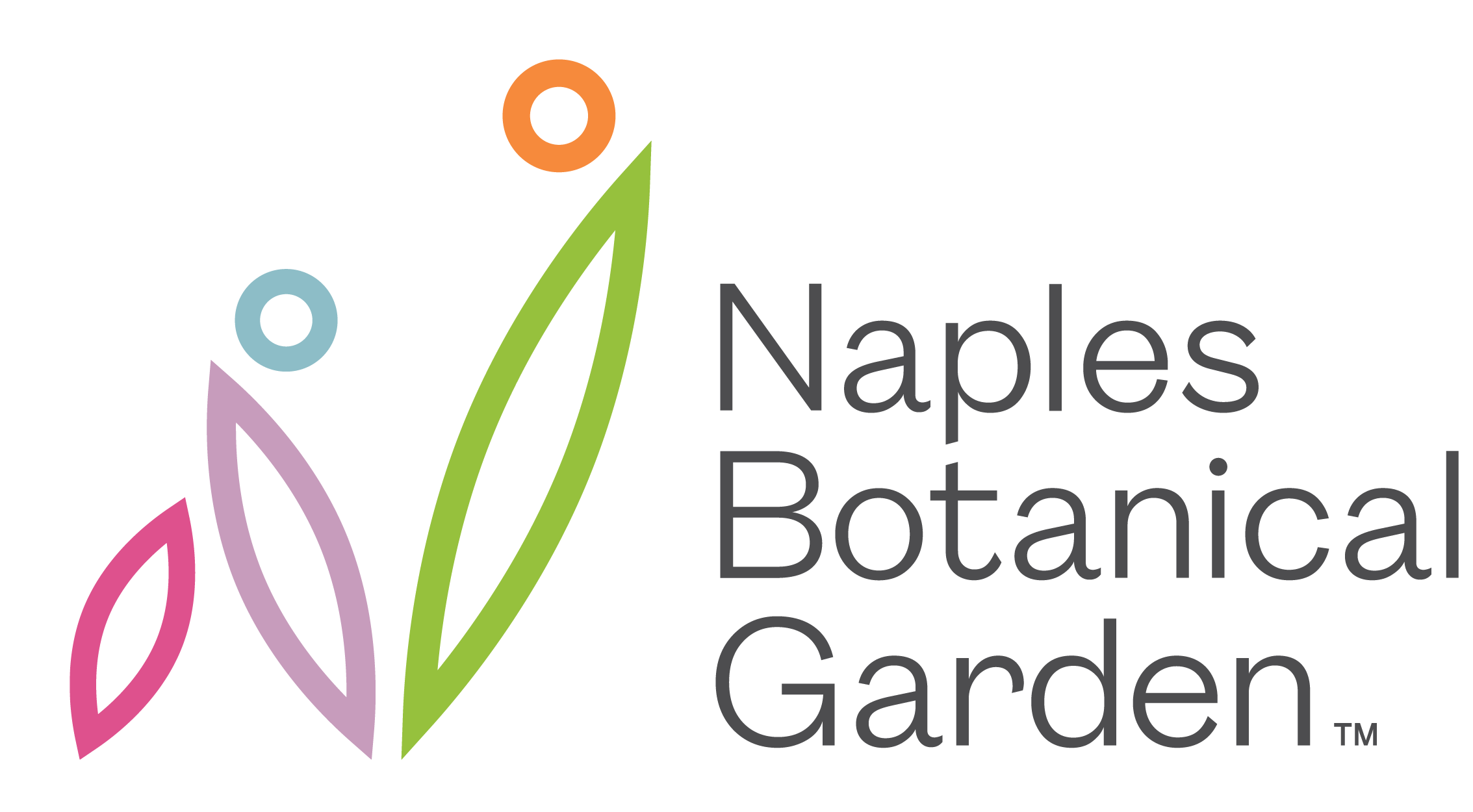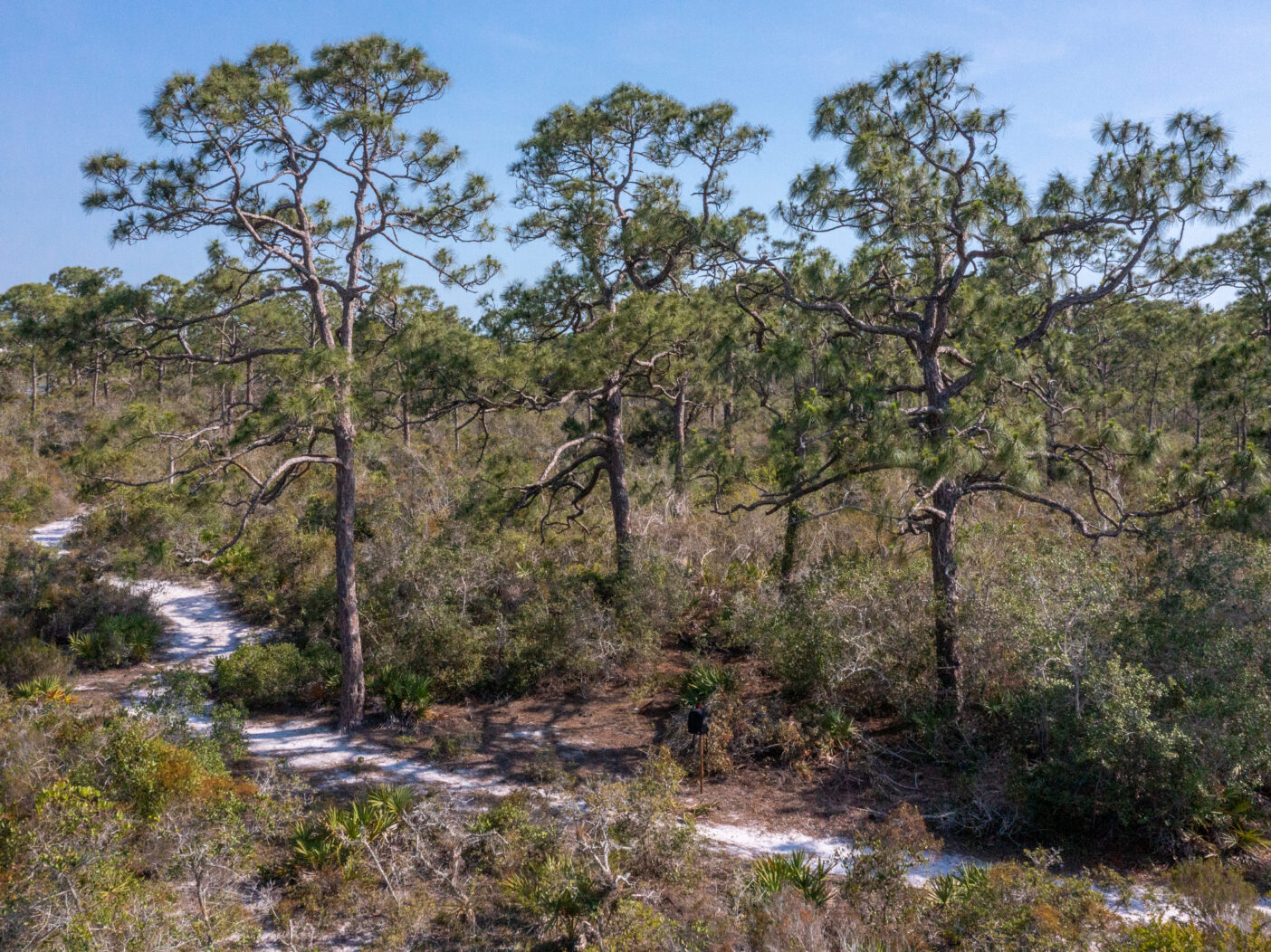
This season’s Frame & Flora marks the first time we’ve included the Preserve in a major outdoor exhibition. There are eight oversized frames stationed throughout our trails, inviting viewers to study Florida’s natural habitats like paintings in a museum.
In that spirit, we asked our Natural Resources Team to share their favorite Southwest Florida native species. Look for these the next time you’re out in the woods—or identify your own favorites!
Florida rosemary (Ceratiola ericoides)
Eric Foht, Natural Resources Director
“Florida rosemary is a common scrub species in scrub habitats throughout South Florida—it’s a quintessential species of the Florida scrub.”
The bushes sprinkled throughout our Preserve look strikingly like the rosemary you’d add to your favorite dish. But your kitchen’s Salvia rosmarinus originates in the Mediterranean and it is unrelated to the Ceratiola ericoides found in Florida’s scrub habitats and sandhills. Florida rosemary continues its culinary mimicry with its fresh aroma, but it is not edible. (That is, unless you are a rosemary grasshopper, whose diet consists solely of this plant’s leaves!)
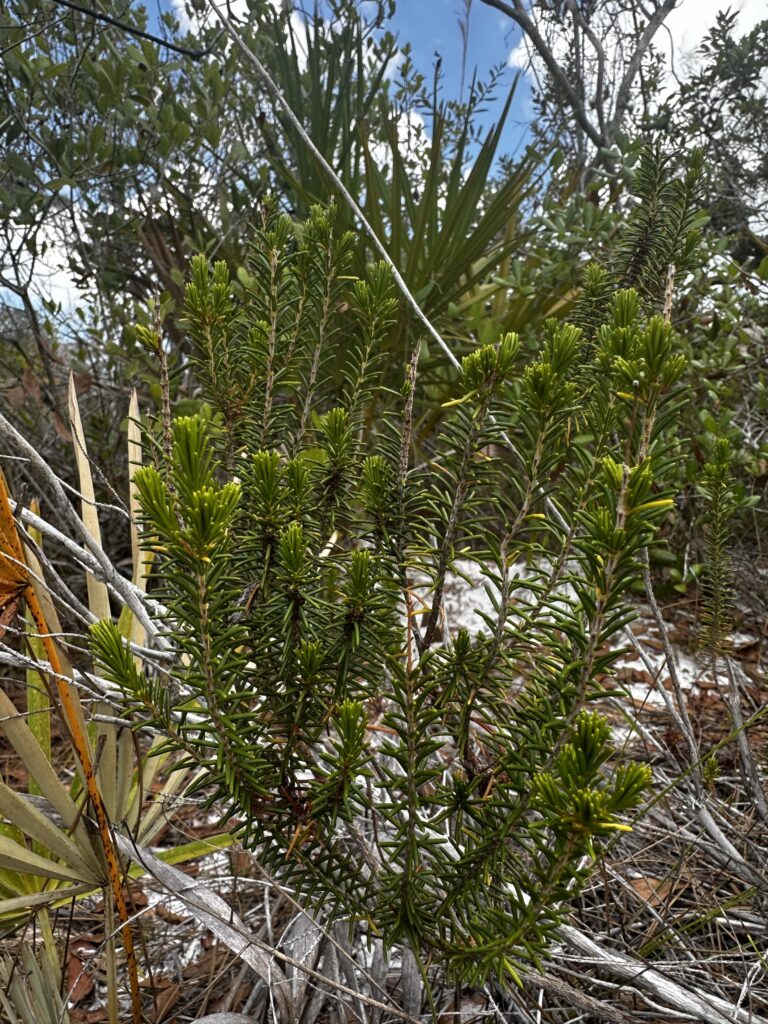
The plant grows in rounded domes, up to 6 feet in height.
“Florida rosemary has an interesting property,” Eric Foht says. “When they fall, the needle-like leaves create an area that inhibits sprouting. So, when you look at Florida rosemary, you’ll often see these areas of bare sand around it. That helps define the structure of scrub ecosystems.”
That competition-killing strategy is known as “allelopathy,” a process in which a plant secretes chemicals (ceratiolin, in rosemary’s case) through its roots and leaves and into the surrounding soil.
Foht points to the trunk. “It has this gnarled, kind of contorted shape,” he says. “They’re really beautiful—almost like bonsai of the scrub.”
Prickly pear (Opuntia spp.)
Cody Weber, Natural Resources Associate
“I think people may think (prickly pear) is invasive or it comes from someone’s garden, but really, it’s been thriving here for centuries.”
Prickly pear cacti (Opuntia spp.) may look like they’re straight out of a desert, but these flat-padded plants are rightfully at home in the Sunshine State. You may come across them on the sandy trails through the Preserve (a reminder as to why we encourage closed-toes shoes!)

“It’s going to be found in various habitats across Southwest Florida, including dunes and pinelands,” Cody Weber says. “It’s resilient and salt tolerant. It’s able to survive droughts.”
Another neat feature of this hardy plant: It has adapted along with native wildlife, Weber adds. Gopher tortoises, for example, can eat right through them, but nonnative species haven’t figured out how to get through the spines.
Prickly pears are a traditional food for some people, too. Their pads, known as “nopales” in Spanish, are commonly used in Mexican cuisine. Its fruit is kiwi-like in consistency and has been processed into everything from jams to juices to chutneys. Fair warning: The fruits are covered with glochids, hair-like splinters that are hard to see but that pierce bare skin easily. Don’t touch them if you see them in the woods.
Rusty lyonia (Lyonia ferruginea)
Miralny Marante, Natural Resources Associate
“If you know anything about Florida natives, it’s that the flowers are very tiny.”
The rusty lyonia (Lyonia ferruginea) is prominent in Florida coastal scrub habitats where they intermix with dominant plants like saw palmetto (Serenoa repens) and add texture and color to the landscape.
“One of my favorite things about this plant,” says Miralny Marante, “is that rusty color on the new growth, which is due to very tiny, fine hairs that give it that coppery look and fuzzy feel.” Those little hairs do more than give the plant its distinctive look; they protect it from pests, she adds.
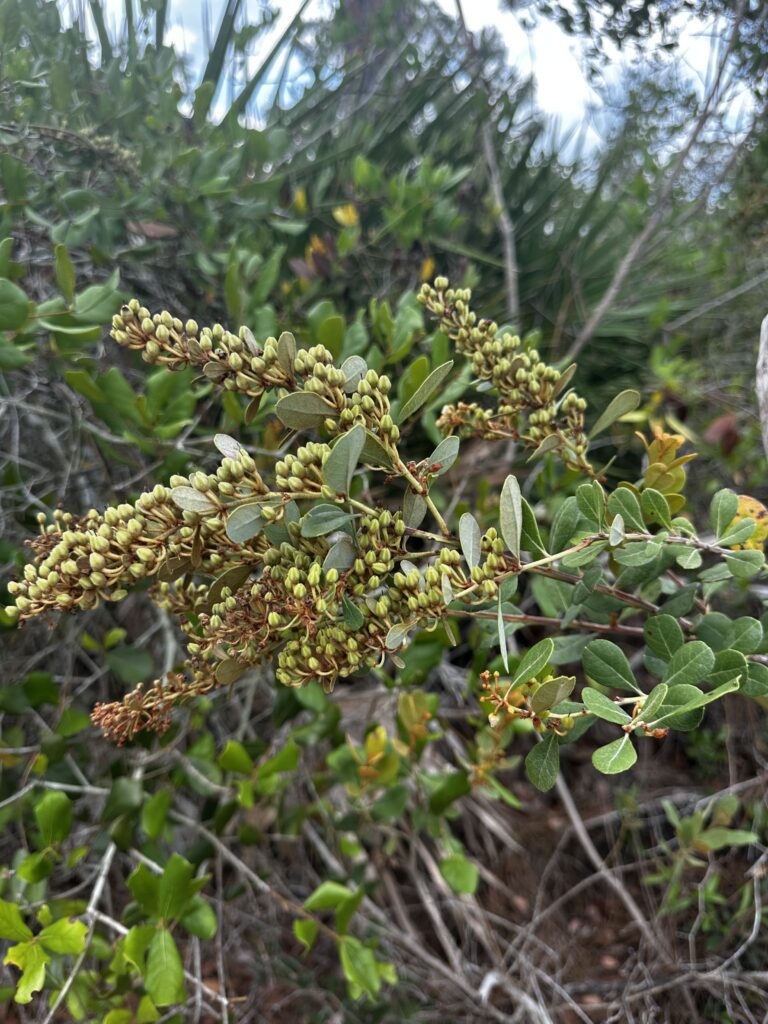
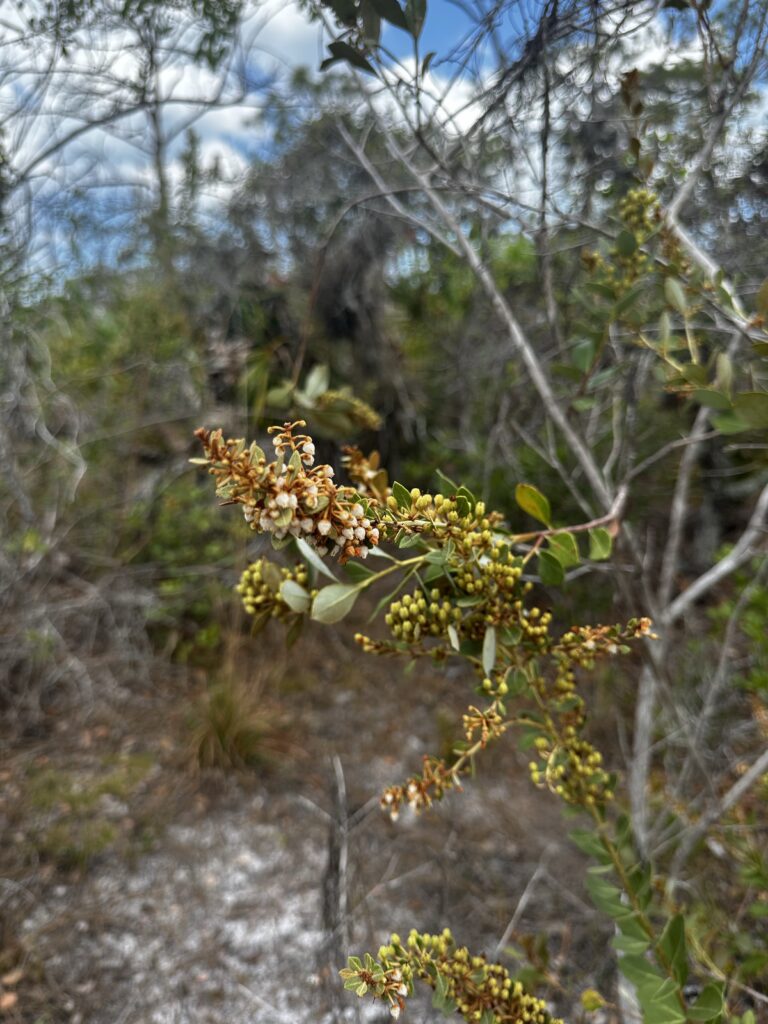
Marante also appreciates its miniature blooms, “tiny, bell-shaped flowers that smell like faint rose,” and the diversity of wildlife the plant supports. “The flowers attract bees, the fruit attracts wildlife, and its leggy growth habitat provides shelter and shade for many small animal species,” she says.
These are tough shrubs, perfect for restoration sites because they’ll grow in areas that have been subjected to some sort of ecological disturbance, such as wildfire or construction, Marante explains. Another bonus: “If you’re like me and don’t have irrigation in your yard, this plant is great because it’s drought tolerant and you can plant it right in the sand. It doesn’t need much water once it’s established.”
Woolly lupine (Lupinus pilosior)
Bella Danaher, Natural Resources Associate
“Because it can’t be grown in captivity, you can only see it in the wild.”
Every 1 – 2 weeks, Bella Danaher hops in a canoe and paddles to an isolated part of our Preserve where she checks on a wildflower, the woolly lupine (Lupinus pilosior). Until recently, the plant was classified as Lupinis diffuses, or skyblue lupine, but a 2024 genomic study identified several new species in the Lupine genus. The woolly lupine is distinct to West Central and Southwest Florida; Collier County is its southernmost point, according to the study.
“What I like about it is its leaves and seed pods have little white hairs that give it a fuzzy look. It also produces beautiful, bluish-purple flowers that make it stand out against the landscape,” Danaher says.
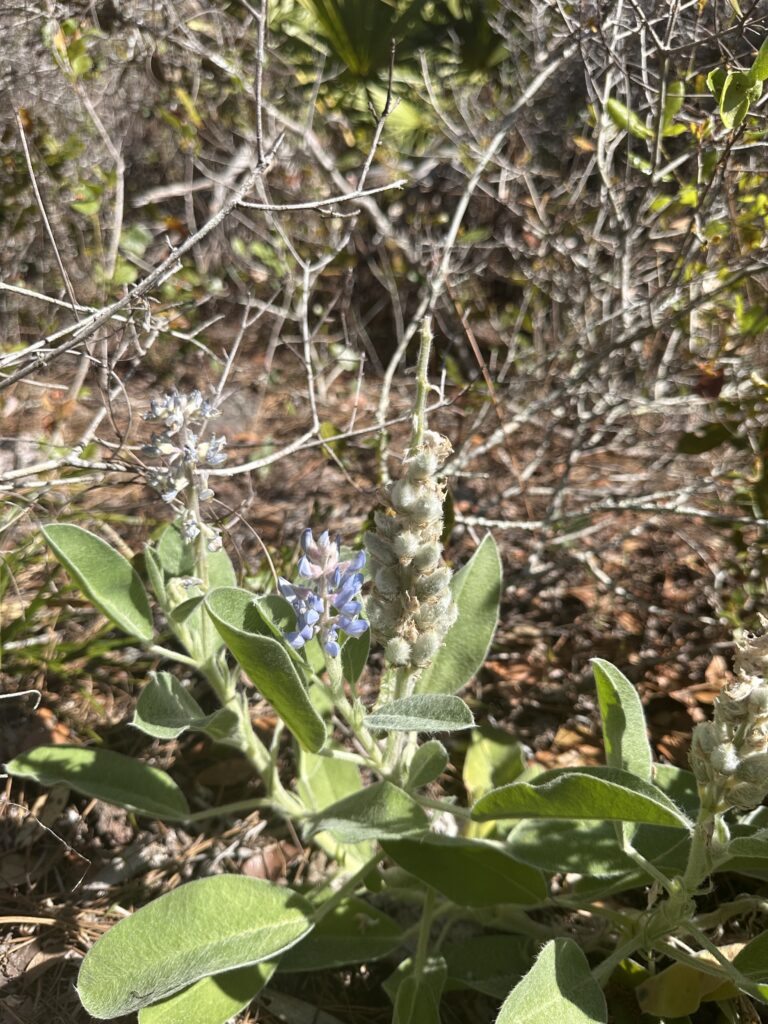
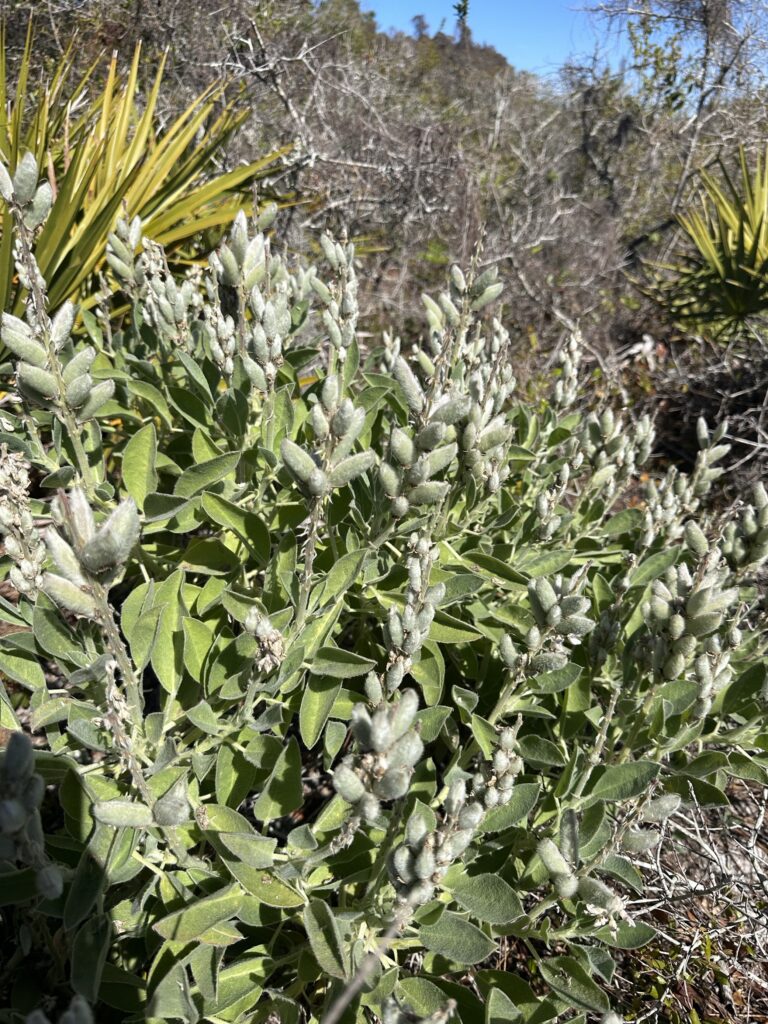
She’ll collect some of its seeds once released from their pods. Some will go into the seed bank; Garden conservationists are concerned about the plant’s long-term outlook given its need for sandy, uplands habitats that are disappearing due to development. They’ll also try to grow some in the nursery. That may prove challenging. The Lupine genus appears to be dependent on elements, such as soil bacteria, found in its natural habitat. “It’ll be trial and error,” Danaher says.
While you won’t be able to see the woolly lupine she monitors, look for other native lupines when you’re out in the woods. They are purplish-blue in color and bloom on stalks.
Saw palmetto (Serenoa repens)
James Panciroli, Natural Resources Associate
“You can get lost in the beauty of its fronds sticking out and intergrowing with each other.”
Saw palmetto (Serenoa repens) are a staple of Florida’s understory, James Panciroli says. Its species name, repens, means “creeping” and describes how the plants snake along the forest floor.
Saw palmettos provide habitat to hundreds of species, ranging from insects to bears to gopher tortoises. The tortoises dig burrows among the saw palmetto plants, which multiple species use to take refuge. During our prescribed fires, for example, we’ve watched snakes disappear into them and stay safe until we extinguish the flames.
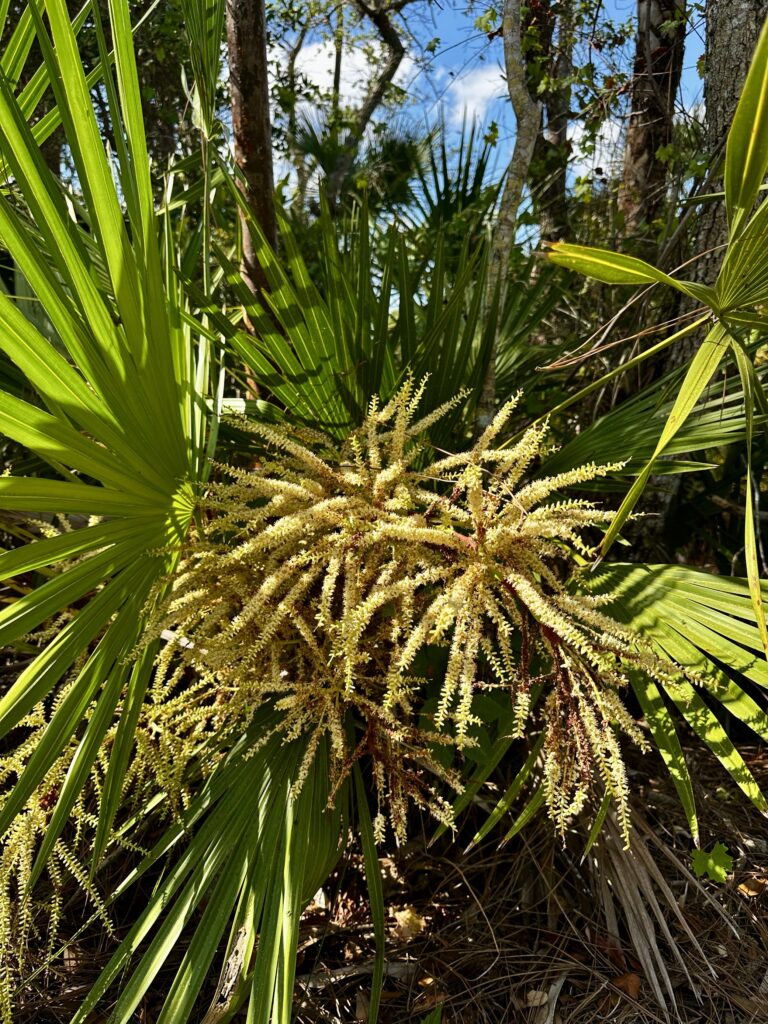
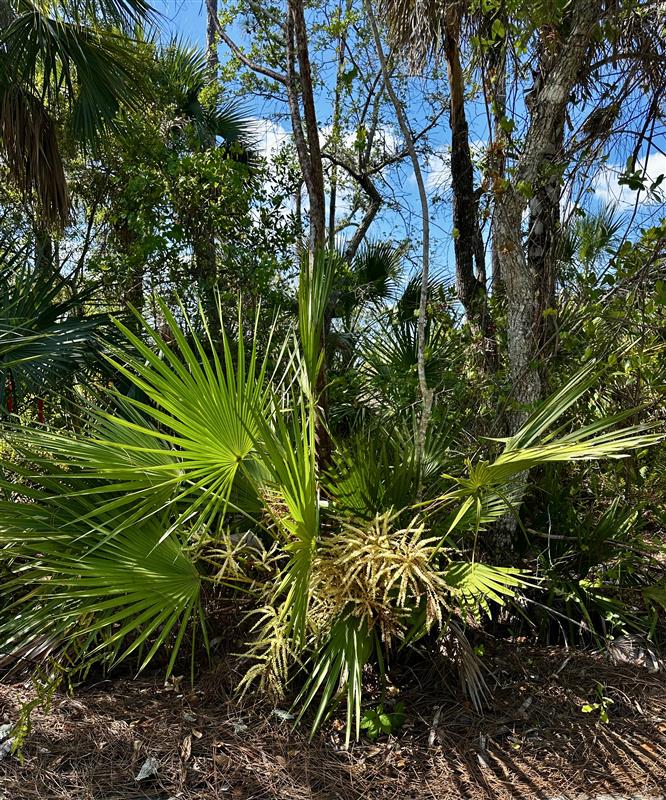
Saw palmetto (Serenoa repens)
The plant is one of the species most utilized by wildlife, supporting everything from bears to birds to deer to gopher tortoises to rodents. Panciroli imagines wildlife gathering around this all-important plant for food, shelter, and more. “It shows a keystone species and how everything works together,” he says.
People have long relied on saw palmetto, too. It is a common herbal supplement (though, we might add, it is illegal to harvest berries without a state permit).
Saw palmettos are adapted to wildfire, meaning they depend on occasional burns to foster growth and reproduction. Panciroli likes to watch them rebound after a burn. “The fronds can be seen growing back a week after a burn,” he says. “After a year, (the plants) can already be back to pre-burn conditions.”
Twisted air plant (Tillandsia flexuosa)
Mike Cox, Natural Resources Manager
“It’s another great representation of how unique and biodiverse our habitats are here.”
If you look carefully, you might find twisted air plants tucked into oaks and buttonwood trees along the Preserve’s sandy paths.
“The plant is light green in color, and has these light grey to almost purple stripes,” Mike Cox says. “The plant grows in a twist—hence the twisted airplant—and in the twists are these bands of color.”
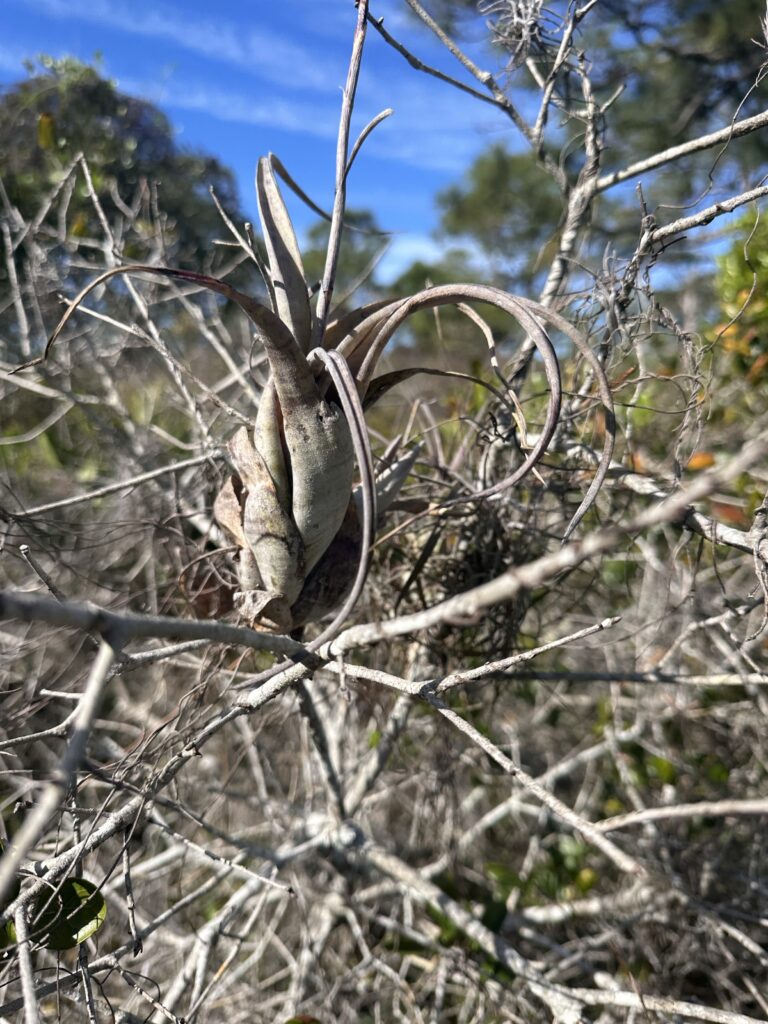
Cox wants to spotlight this plant because it’s vulnerable to habitat loss and an invasive weevil, the Metamasius callizona, that has wreaked havoc on some bromeliad species (Tillandsia are a type of bromeliad), earning it the nickname “the evil weevil.” Florida has 16 native bromeliad species; 12 are susceptible to the weevil. The twisted air plant is among those listed as “threatened” by the state.
Development likewise jeopardizes this and related species.
“(Twisted air plants) grow in pinelands, pine rocklands, coastal scrubs, marine tidal swamps, and these are all habitats we don’t have a lot of due to development,” Cox says.
That’s a reminder as to why the Garden works hard to protect the plants within our 90-acre Preserve. It includes some of the region’s last remaining coastal scrub habitat, dry, sandy land that supports many of our native species—plant and animal alike—including these favorites of our team!

